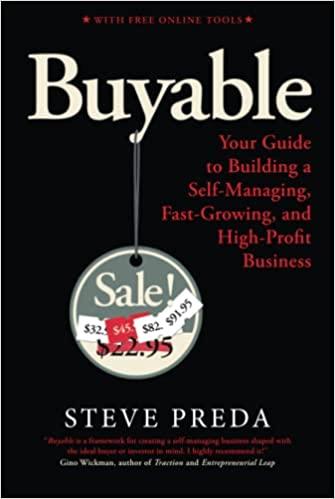Question
Problem 10: An investment of $85,000 generates a uniform annual income of $22,000, incurs annual operating and maintenance expenses of $4,000, and has a salvage
Problem 10: An investment of $85,000 generates a uniform annual income of $22,000, incurs annual operating and maintenance expenses of $4,000, and has a salvage value of $30,000 after 14 years. What is the IRR of this investment?
Problem 11: The purchase price of a vehicle is $45,000 which is expected to drop to $12,000 after 7 years of use. If the applicable depreciation method is the 150% declining balance, what is the book value of this vehicle at the beginning of the 6th year? Do not switch to the straight line depreciation method.
Problem 12: A company invested $680,000 in a new solar energy system which is expected to save $100,000 at EOY 1 and the savings decrease annually by $3,000 until EOY 15. If this system is depreciated over its useful life of 15 years using the double declining balance depreciation method, and using a 20% income tax rate, what is the after-tax cashflow at EOY 5?
Problem 13: Three investment alternatives (A, B, and C) are analyzed. Using a MARR of 20%, the present worth (PW) and internal rate of return (IRR) values for the three alternatives are as follows: PW(A) = $8,905, IRR (A) = 21%; PW(B) = $5,207, IRR (B) = 25%; and PW(C) = $7,702, IRR (C) = 23%. If the three alternatives are mutually exclusive, which alternative(s) will you select?
Problem 14: The investment costs, annual expenses, salvage values, and useful lives of 4 mutually exclusive alternatives are as follows: A ($30,000/ $3,500/ $2,000/ 9 years), B ($45,000/ $2,500/ $6,000/ 5 years), C ($50,000/ $4,000/ $26,000/ 7 years), and D ($67,000/ $3,000/ $30,000/ 6 years). If the interest rate is 8% per year, which alternative will you select?

Step by Step Solution
There are 3 Steps involved in it
Step: 1

Get Instant Access to Expert-Tailored Solutions
See step-by-step solutions with expert insights and AI powered tools for academic success
Step: 2

Step: 3

Ace Your Homework with AI
Get the answers you need in no time with our AI-driven, step-by-step assistance
Get Started


